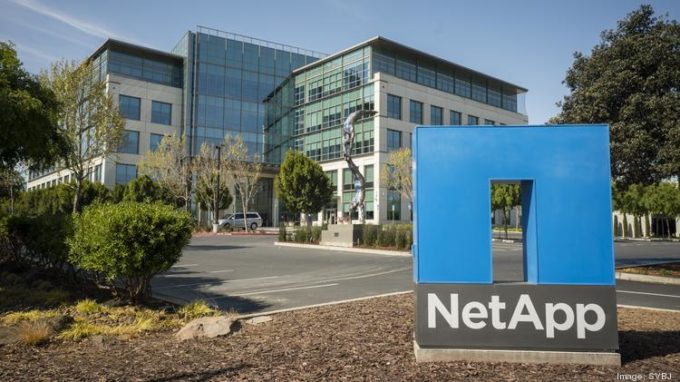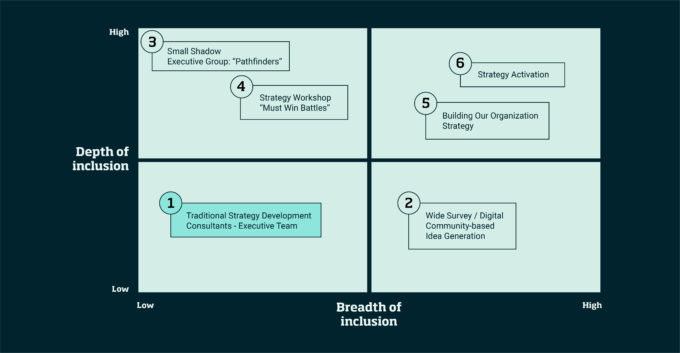Overcoming the breadth depth trade-off
While the above programs all proved successful in their own ways, they still came up against a breadth-depth trade off. Based on our observations and today’s digital technologies we outline two examples below of how to incorporate both into your decision-making on strategy.
Inclusion through a BOOST journey: let us return to the newly promoted CEO of Roche Diagnostics Centralized and Point of Care Solutions. Drawing on his experience in Germany, he decided that he wasn’t going to just implement the proposed strategy handed down to him by the leadership team. Instead, he opened the process to the whole organization. Needless to say, the Head of Strategy at the time was not amused but agreed to play along. Over a six-month period, the strategy team achieved 50% engagement through voluntary means reaching 800 people. They conducted over 50 three-hour strategy workshops on where to play, how to win and the capabilities to get there. These workshops produced 11,300 ideas digitally, which were further collated, understood, synthesized and fed back to the organization.
As a result of their “Build Our Organization Strategy Together” or BOOST approach – the company decided to shutter a factory in Boston and re-prioritize some projects. Despite some difficult choices, employee engagement for the division increased sharply. One year later, the CEO was asked to take over the whole of the Roche Diagnostics division (36,000 employees). And guess what, he did it again.
Inclusion through a Strategy Activation journey: Swiss Re Corporate Solutions, the direct commercial insurance business unit of the global reinsurance company, employs 2,500 people and provides insurance cover and services to clients globally with annual premiums earned of $5.3 billion. For many years, the division had floundered under an unclear strategy, notching up large losses until 2019 when Swiss Re decided to prune unsuccessful businesses and introduce new products and services, which are close to the company’s core competences and offer future revenue streams. Yet internal surveys showed that most staff did not understand the elementary cornerstones of the new strategy and were unable to connect the dots to their personal contribution – despite communication efforts such as townhalls, newsletters, briefing calls, and articles on the intranet.
A cross-departmental group of young leaders, sponsored by the CEO, took up the challenge of activating rather than communicating the new strategy through an interactive digital platform, involving the entire company across the globe. First, the team created a comic-style Big Picture, which portrayed the business unit’s history, priorities, and initiatives as well as its future ambitions. The picture has been developed by the employees themselves and is deep in content, as it incorporates the many thought-through chapters of the wider Corporate Solutions strategy.
Employees were then asked to reflect on the “Big Picture” and explain the strategy story to fellow-employees, which resulted in the entire company telling its strategy multiple times. Corporate Solutions then run so-called “expeditions”, in which 350 employees taking the role of a moderator, run digital workshop-style sessions, in which, again, the entire workforce deepens on elements of the Big Picture in small groups of around eight. These group moderated sessions are accompanied by “single player mode” sessions, in which employees intensify their personal contributions towards the company’s strategy.
With a participation rate beyond 85% in certain expeditions with the highest category of statistical representation and an average rating of 4.5 out of 5, these sessions aim beyond rationalizing content but rather creating it. For example, co-developed business models for Digital & Data are now being implemented by the respective unit. This represents a cross-divisional and pan-global engagement never seen before in the history of the company. The Big Picture is meanwhile used for steering annual priorities for new business pitches, in client meetings, during offsites or townhalls – as a reference point to literally understand the bigger picture. Accompanied to date by two expeditions on average per year, on specific areas of the strategy and always with the entire workforce – aiming consistently at visible changes.


 Audio available
Audio available






